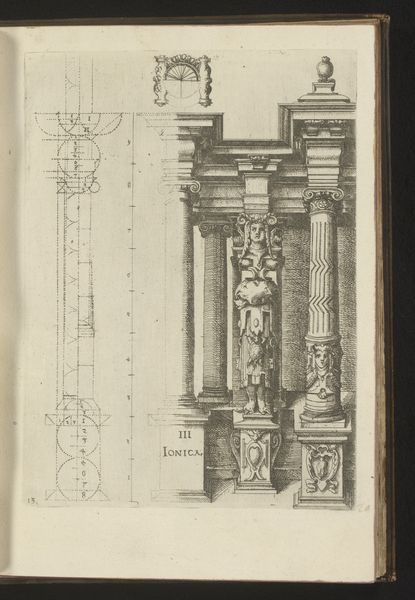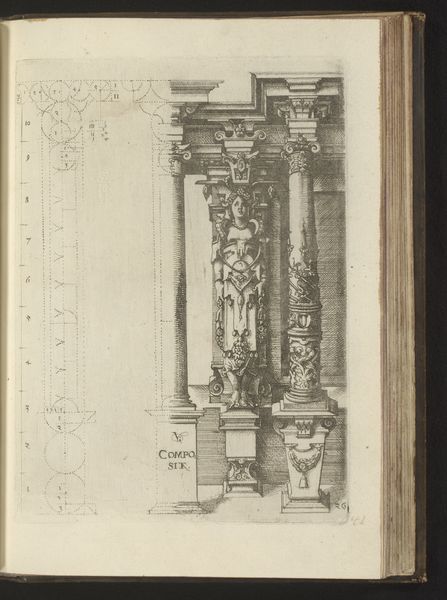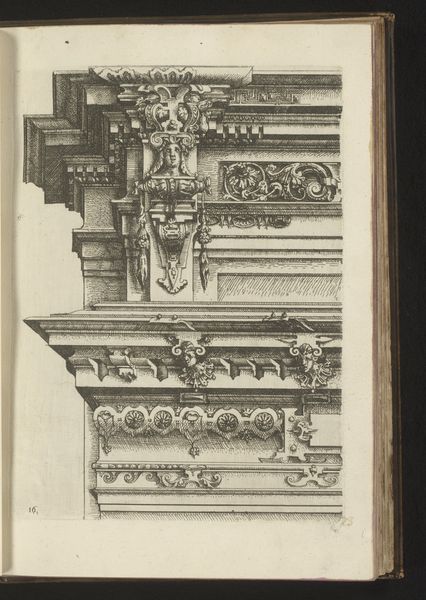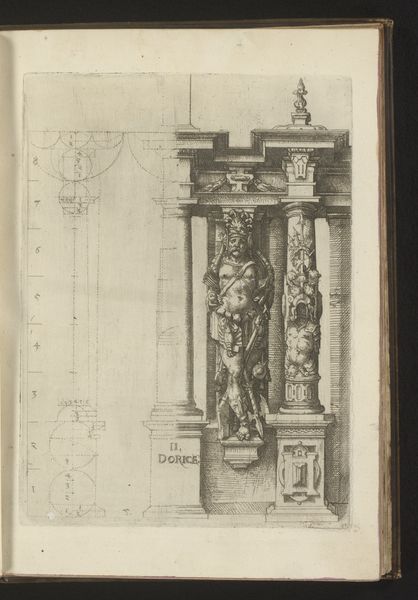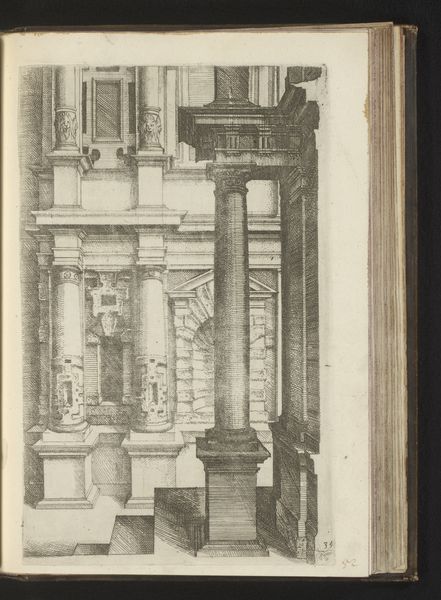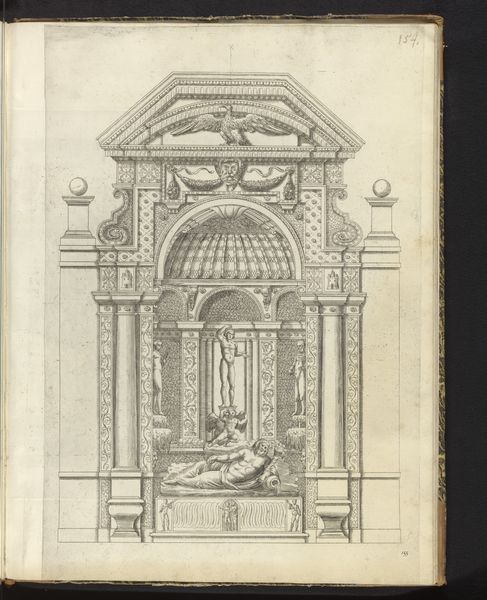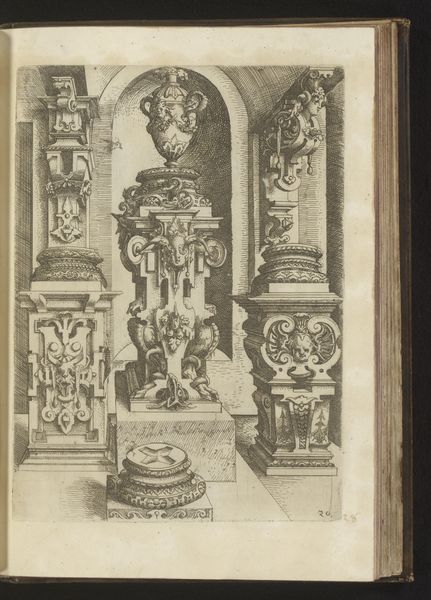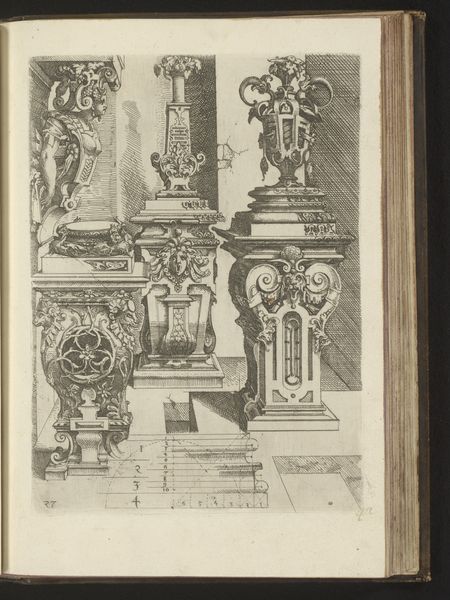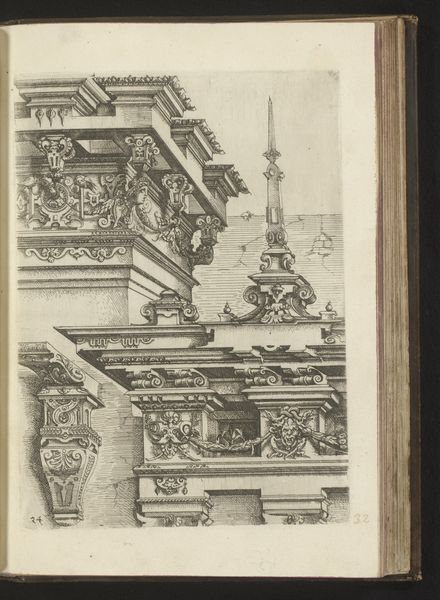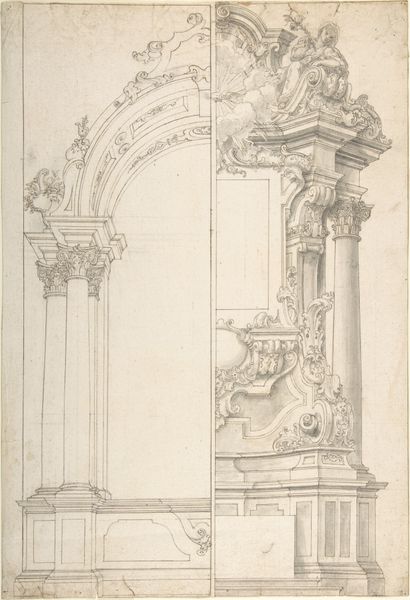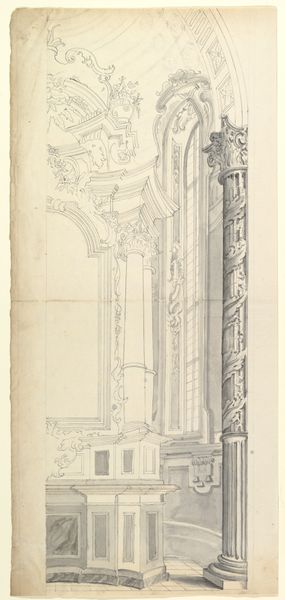
Verhoudingen van de Toscaanse zuilenorde met een atlant in de gedaante van een landarbeider in een ton tussen twee zuilen 1593 - 1595
0:00
0:00
drawing, paper, ink, engraving, architecture
#
drawing
#
perspective
#
paper
#
11_renaissance
#
ink
#
geometric
#
academic-art
#
engraving
#
architecture
Dimensions: height 251 mm, width 183 mm
Copyright: Rijks Museum: Open Domain
Editor: Here we have Wendel Dietterlin’s engraving from around 1593, “Proportions of the Tuscan Order of Columns with an Atlas in the Guise of a Farmhand in a Tun Between Two Columns.” I am immediately struck by the precision and intricacy of the linework; it is really impressive. How do you interpret this work from a formal perspective? Curator: It is indeed meticulously rendered. I would direct your attention to the play of contrasting textures and geometric forms. Note how the rough-hewn texture of the farmhand contrasts with the smooth, classical lines of the Tuscan columns. This deliberate juxtaposition creates a visual tension that is further amplified by the almost mathematical precision of the architectural renderings on the left. Do you notice the semiotic relationship here? Editor: You are right. The rough figure, so different from the smooth geometry beside him. I did not quite put that together. The cross-hatching also emphasizes a certain sense of depth even on a relatively flat plane. I also noticed the perspective, with all the lines carefully converging. How would you say the medium is best expressing the Renaissance architecture on display here? Curator: Precisely. And in considering medium, note that engraving lends itself particularly well to the depiction of linear precision and detail. Consider how the artist harnesses this capacity to meticulously delineate the various architectural elements, imbuing the drawing with a sense of three-dimensionality and material presence. This formal exercise conveys knowledge, displaying perfect geometrical relationships. The paper substrate creates a blank space, where Dietterlin arranges geometrical ideas. The architecture itself might have been the artist's support structure for creating perfect order. Editor: So it is less about *what* is depicted and more about *how* it is depicted? This gives me a better understanding of the relationship between medium, technique, and meaning. Thanks so much! Curator: Indeed. Formal analysis urges us to view artworks as systems of interconnected elements, in order to engage with deeper meaning.
Comments
No comments
Be the first to comment and join the conversation on the ultimate creative platform.
